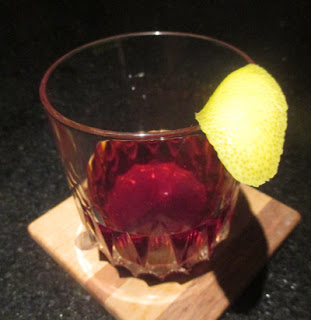The Washington Post a few days ago had an
article entitled, "Covid-19 makes us think about our mortality. Our brains aren't designed for that." This reminded me of the first few weeks of the pandemic quarantine where I noticed on social media that many people were tapping into their special bottle reserves. Personally, I too went deep into my spirits reserves and drank things such as pours of Booker's Bourbon bottled in 2007 and Daiquiris made with Plantation Panama 1997. We also tapped into our reserve beer cellar, but that was partially out of necessity for we ran out of regular beer (we were far from running out of regular spirits though). Thoughts began to drift through my head questioning my mortality and the reason for holding on to things of value. Some of those have great worth only to myself or a select few in the world, and without offspring to pass them on to, what was the point not to be enjoying them now? Alcohol collecting is one of the few hobbies where the appreciation of your collection leads to its diminishment and demise.
The article in
The Washington Post described how Covid induced grief, fear, and anxiety: "It is the existential anxiety caused by reminders of our own mortality." It continued on, "Simply put, to function as a conscious being, it's imperative that you be in denial about your impending death. How else would you go about the mundane aspects of your daily life — cleaning the gutters, paying the bills, sitting in traffic — if you were constantly aware of the inevitability of your own death?" "In other words, we are wired to accept that death happens — just not to us." The concept solidified my rationale as to why a faction of our country still refuses to accept pandemic safety measures — they are refusing to acknowledge the reality of their own death.
The phenomenon intrigued me enough that in early April, I reached out to a spirits collector or two and ask people on an industry group to email me if they wanted to answer a few questions. I narrowed it down to five:
1. Name, role in the spirits/bartending world, location?
2. What liquor/liqueur type(s) do you collect?
3. What have you learned about history through collecting spirits or a spirits line?
4. How often did you generally tap into your collection (pre-pandemic) to taste?
5. How has this pandemic changed the way you view collecting? Are there bottles that you have opened up recently that you might not have thought about before?
In the end, I received only a few responses. Some who answered were distant from their liquor shelves at that time, so there was not much data to glean. The rest seemed to gloss over questions 4 and 5 which were at the root of what I wanted to learn about. A good number who received the questionnaire never wrote back. I figured that it was too heavy of an issue to confront, and that perhaps I should have been more subtle in my line of questioning. Six months later, I finally got around to writing up my thoughts.
As the world began to equilibrate to a "new normal" as fear diminished, more sensible approaches to one's personal safety emerged. With that, I noticed that I recovered a more logical view to preserving my spirits collection. It still makes me wonder about how many things we put off since its not the right time. Whether it is drinking a special bottle of wine, beer, or spirits or going on a trip. There are certainly wrong times to open something special such as in inebriated or stressful points when the appreciation skills would be low, but waiting until the "right" life moments happen is putting too much symbolism into things. The pandemic also made me realize what it would be like to be old down to the inability to travel, dine out, or spend ones wealth. Why save things later in life when you cannot physically enjoy them or do them?
In 2010, when we attended an amazing rum
tasting at famed collector Steve Remsberg's house, one thing struck me when we were tasting pre-Prohibition New England rums and pre-Fidel Castro Cuban ones. Here were these valuable bottles that Steve was willing to open, appreciate, and share (as long as he had an unopened one in his library for future generations). He saw no point in not experiencing his collection; however, to tone down the reverence and re-center the guests, he would humbly comment every so often, "Tastes good, doesn't it?"














 3/4 oz Plantation Original Dark Rum
3/4 oz Plantation Original Dark Rum















 1 oz London Dry Gin (Beefeater)
1 oz London Dry Gin (Beefeater) The 2017 collection of 855 drink recipes, bartender tributes, and essays on hospitality from CocktailVirgin's Frederic Yarm. Available at
The 2017 collection of 855 drink recipes, bartender tributes, and essays on hospitality from CocktailVirgin's Frederic Yarm. Available at  The 2012 collection of 505 drink recipes, techniques, and Boston bar recommendations from Frederic Yarm. Available at
The 2012 collection of 505 drink recipes, techniques, and Boston bar recommendations from Frederic Yarm. Available at 



